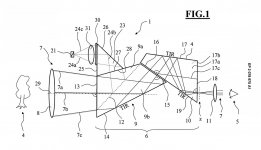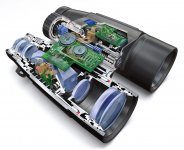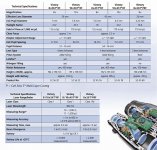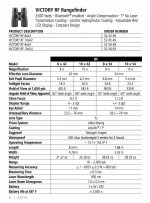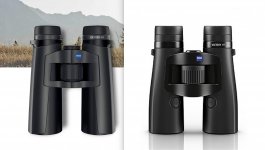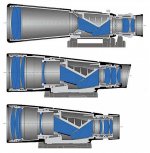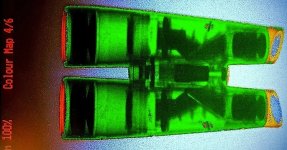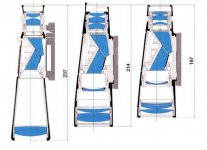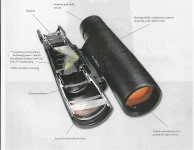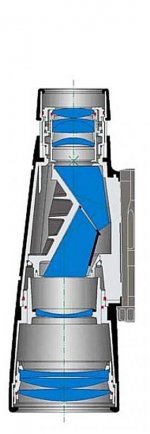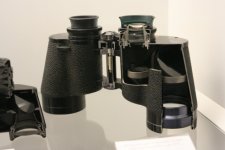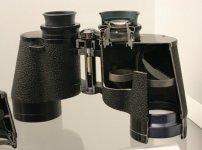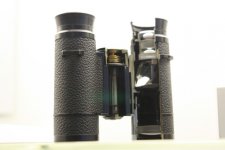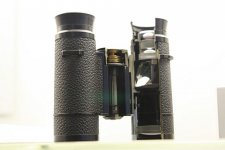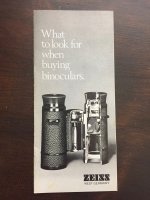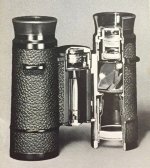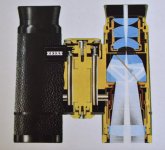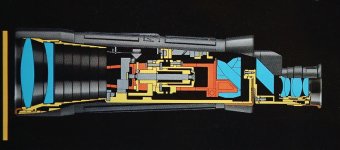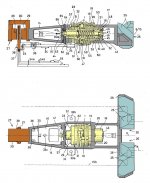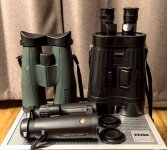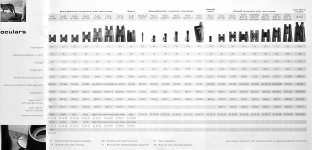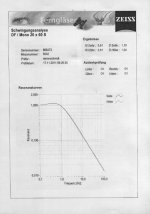John A Roberts
Well-known member

Zeiss RF Images & Information
And for completeness, the Zeiss RF binoculars. While Zeiss has produced 2 generations of them, there’s not a lot of detailed information available
A) Generation 1: from 2008 in x45 and x56
I’ve attached a copy of the 2008 European patent application, along with a translation, and an image from the patent
I’ve also attached a copy of the specification sheet for the 4 models, along with a x45 cross-section from Optics Talk at: http://www.opticstalk.com/uploads/1/Schnitt_RF_1000.jpg
B) Generation 2: from 2018 in x42 and x54
I’ve not seen a cross-section, but for comparison I’ve attached a copy of the spec’s, along with an image that I cobbled together to compare the x42 RF to it’s conventional x42 HT counterpart
- the Gen 2's are significantly more compact than their Gen 1 counterparts
As many will be aware, depending on how an RF mechanism is implemented in a binocular, it can have a significant effect on overall transmission,
the shape of the transmission curve for each barrel, and the difference between the 2 curves
see here for information about the effects on transmission: https://www.birdforum.net/showthread.php?t=379668
Well that’s more than enough for today!
John
Generation 1 information and images:
And for completeness, the Zeiss RF binoculars. While Zeiss has produced 2 generations of them, there’s not a lot of detailed information available
A) Generation 1: from 2008 in x45 and x56
I’ve attached a copy of the 2008 European patent application, along with a translation, and an image from the patent
I’ve also attached a copy of the specification sheet for the 4 models, along with a x45 cross-section from Optics Talk at: http://www.opticstalk.com/uploads/1/Schnitt_RF_1000.jpg
B) Generation 2: from 2018 in x42 and x54
I’ve not seen a cross-section, but for comparison I’ve attached a copy of the spec’s, along with an image that I cobbled together to compare the x42 RF to it’s conventional x42 HT counterpart
- the Gen 2's are significantly more compact than their Gen 1 counterparts
As many will be aware, depending on how an RF mechanism is implemented in a binocular, it can have a significant effect on overall transmission,
the shape of the transmission curve for each barrel, and the difference between the 2 curves
see here for information about the effects on transmission: https://www.birdforum.net/showthread.php?t=379668
Well that’s more than enough for today!
John
Generation 1 information and images:
Attachments
Last edited:




